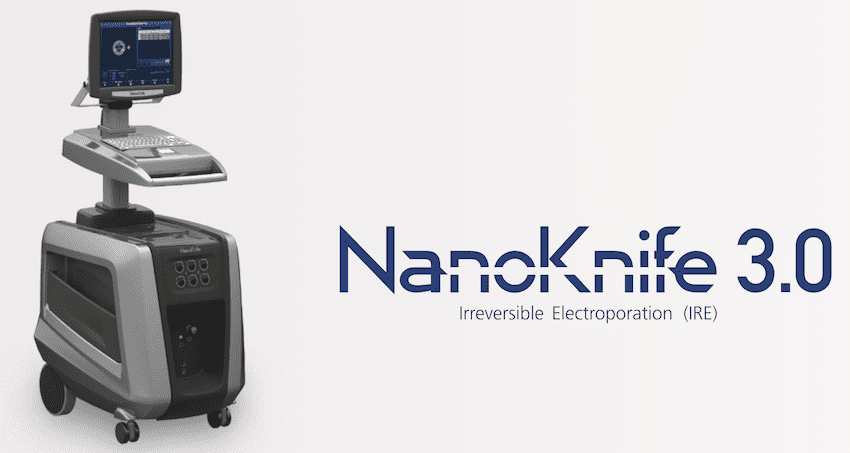What is a pancreatic cancer?

Around 3,300 people develop pancreatic cancer each year in Australia. Diagnosis of pancreatic cancer can be challenging, as symptoms often do not appear until the later stages when the cancer is large enough to affect nearby organs or has spread. Pancreatic cancer can often display the same symptoms of other conditions, making it more difficult to diagnose.
Pancreatic Cancer - symptoms
- Abdominal pain
- Loss of appetite/weight loss
- Nausea and vomiting
- Change in bowel movements (diarrhoea, constipation)
- Jaundice (eyes and skin turning yellow)
If you are experiencing any of these symptoms and are concerned, you should make an appointment with your doctor.
- Age (generally occurs in adults ages 60+)
- Chronic pancreatitis
- Family history of pancreatic cancer
- Smoking
- Excessive alcohol consumption
- Diabetes
Pancreatic Cancer - diagnosis
- Blood tests
- Ultrasound
- CT Scan
- MRI
- PET Scan
- Tissue sampling test
Pancreatic Cancer Treatment
Once diagnosed, your doctor will discuss the best treatment options for your cancer. Treatment options will depend on the type of cancer, whether the cancer has spread, while considering you age, fitness and general overall health.
Patients with cancers in their pancreas are classified depending on the anatomy of their tumour as either ‘resectable’ where the tumour looks like it will be able to be removed at surgery; ‘locally advanced’ where the tumour is not able to be removed because of involvement of important blood vessels; or in between and ‘borderline resectable’.
Increasingly it seems the best way to treat patients with borderline resectable pancreas cancer is to deliver chemotherapy first, then repeat all the scans and blood tests to see how the tumour has responded rather than rushing into surgery. This is because rushing to surgery may be associated with a higher rate of not being able to completely remove the tumour (either microscopically or grossly), and in some cases not even being able to complete the operation as planned at all.
Treating patients whose tumour is locally advanced is also complex and chemotherapy and radiotherapy remain the main methods used to treat tumours of this type. There is a lot of research going into other treatment options for locally advanced pancreas cancers and one area of active research is in IRE.
What is IRE?
The IRE process for pancreas cancers involves an operation and combined procedure with trained radiologist doctors whereby A/Prof Pilgrim gains access to the pancreas cancer tumour area, and the radiologist then inserts special IRE needles into and around the tumour carefully using ultrasound images to guide needle placement. When the needles are positioned where the radiologists want them, electrical current is generated between the needles in high voltage pulses. This creates permanent nanopores or holes in the cancer cells to disrupt cellular function. The disruption initiates an effect which leads to permanent cell death. After delivering a sufficient number of high voltage pulses, the cells within the electrical field will be irreversibly damaged.
The NanoKnife System does not rely on heat to achieve cell death. Instead, it causes a more natural method of cell death, while, in turn, destroying only targeted tissue and sparing critical structures, including vessels, nerves, and ducts in the area. It is therefore ideally suited for treating locally advanced pancreas cancers that are by definition wrapped around these critical blood vessels and which are not amenable to surgery.



Am I a suitable candidate for IRE?
Not all tumours are suitable for IRE and before proceeding to the surgery and the IRE process, all patients are first treated with chemotherapy. IRE remains an experimental treatment for pancreas cancers, and there are only a few hospitals that have the equipment and expertise to deliver the treatment.
A/Prof Pilgrim performs this procedure for public and private patients at The Alfred Hospital and the information regarding the procedure and outcomes contribute to the worldwide American HepatoPancreaticoBiliary Association IRE registry that is seeking to further clarify how effective the procedure is, and guide future developments in this new and exciting field.
Patients with tumours that are considered ‘resectable’ still are usually offered surgery first, but there are also some clinical trials that are testing to see if giving these people chemotherapy first improves outcomes too.
The main surgical treatments for pancreatic cancer include Whipple’s Procedure, (see below) distal pancreatectomy (removing the ‘body and tail’ of the pancreas) or total pancreatectomy (removal of the entire pancreas).
Whipple’s Procedure
Whipple’s procedure can also be used to treat other pancreatic issues such as pancreatic cysts, neuroendocrine tumours and other tumours/disorders arising in the area such as distal bile duct cancers, ampullary cancers, duodenal cancers and other rare tumours.

